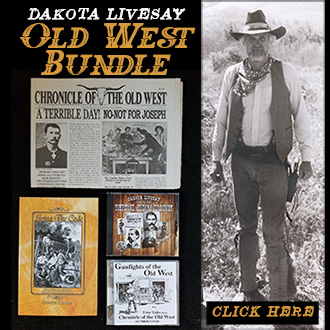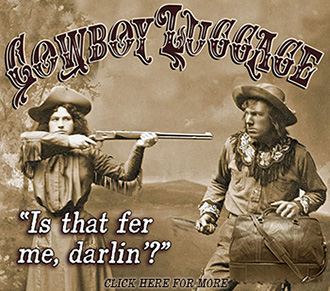 Parsons and Brice have chosen Texas Ranger (Nelson Orcelus) N.O. Reynolds not because he is well-known, but because he is deserving of recognition. Reynolds was one of those brave, dedicated individuals who believed in justice, law and order. He was willing to ride hard, shoot straight and suffer all of the hardships and dangers in a land filled with deadly intrigues.
Parsons and Brice have chosen Texas Ranger (Nelson Orcelus) N.O. Reynolds not because he is well-known, but because he is deserving of recognition. Reynolds was one of those brave, dedicated individuals who believed in justice, law and order. He was willing to ride hard, shoot straight and suffer all of the hardships and dangers in a land filled with deadly intrigues.
Author Parsons has written numerous Western history books. He was for seventeen years “The answer Man” for True West magazine, as well as editor for the Quarterly and Newsletter of the National Association for Outlaw and lawman History. (NOLA).
For writing this book, Parsons has partnered with native born Texan Donaly E. Brice, Senior Research Assistant of the Texas State Library and Archives Commission. Brice has authored a number of books depicting Texas history.
Carefully researched, well-written, the biography of N.O. Reynolds is fast-paced reading about a man who served with the Texas Rangers, Company E, Frontier Battalion in various ranks for nearly five years. During that time only one man, Tim McCarty was killed in Reynold’s command. “Citizens of Texas wanted lawmen with courage and efficiency,” and they certainly got that with N.O. Reynolds. He seemed always in the middle of things when it came to a variety of feuds and gunslinger escapades. The Horrell-Higgins feud, Comanche raids, the Hoo Doo War, the transporting of Texas man-killer John Wesley Hardin, night rides, unruly lynch mobs, shootouts, ambushes, tracking thieves and killers, and capturing the Sam Bass gang were all part of Reynolds’ Job which he handled with steadfast efficiency.
In 1879, after nearly five years of service in Company E, Reynolds resigned from the Ranger Service citing health issues. He had been a Texas Ranger since 1874. At this time he went into the liquor business and bought property and ran a bar for a while but in 1880 he accepted a job as commander of Company D with the Texas Rangers. However, he stalled taking the job citing trouble selling his business, and the job was filled by somebody else.
in 1882 Reynolds, at age 35, married the 20-year old Irene T. Nevill, the younger sister of one of his sergeants. The couple married at the bride’s home in Austin. They would have two daughters, Emma Elizabeth and Lula Jenkins. Lula Jenkins Reynolds Blunt died of appendicitis when still a young woman; her early death was a great tragedy for the family
In 1883 Reynolds became City Marshal of Lampasas, Texas. Here he was still a businessman, his name carne up periodically in newspapers as locals tattled on him for selling liquor on Sundays.
In 1888 to 1890 he was elected sheriff of Lampasas County. He dealt with murder, mayhem and fence cutters. Ranchers cut fences in desperation allowing their cattle to roam for grass and water during a hard drought. Murder followed as desperate cattleman struggled over open rangeland vs private property.
Eventually Reynolds would move to the Gulf Coast of Texas where he worked in the shoe business. According to newspaper advertising, within ten years he was back again in the liquor business. Reynolds’ final employment was work as a night foreman at the Yellow Pine Paper Mill in Orange, one hundred miles east of Houston. He remained here until his retirement in old age. Reynolds died of pneumonia March 1, 1922. His wife died in 1947, and the two rest side by side in the Center Point Cemetery where thirty-two Texas Rangers are buried.
In 1987 the Kerr County Historical Commission with the Center Point Sesquicentennial Committee sponsored a marker dedication honoring these men. In addition, in 1999 a Texas Ranger memorial service sponsored by the Former Texas Ranger Association of San Antonio was held here honoring these brave men who rode, fought, and lived in a different time. Get your copy of this book HERE.
The reviewer, Phyllis Morreale-de la Garza is the author of numerous books about the Old West, including the true crime Death For Dinner, The Benders of (Old) Kansas, published by Silk Label Books, P. 0. Box 700, Unionville, New York, 10988-0700 www.silklabelbooks.com.
*Courtesy of Chronicle of the Old West newspaper, for more click HERE.



 Parsons and Brice have chosen Texas Ranger (Nelson Orcelus) N.O. Reynolds not because he is well-known, but because he is deserving of recognition. Reynolds was one of those brave, dedicated individuals who believed in justice, law and order. He was willing to ride hard, shoot straight and suffer all of the hardships and dangers in a land filled with deadly intrigues.
Parsons and Brice have chosen Texas Ranger (Nelson Orcelus) N.O. Reynolds not because he is well-known, but because he is deserving of recognition. Reynolds was one of those brave, dedicated individuals who believed in justice, law and order. He was willing to ride hard, shoot straight and suffer all of the hardships and dangers in a land filled with deadly intrigues.






